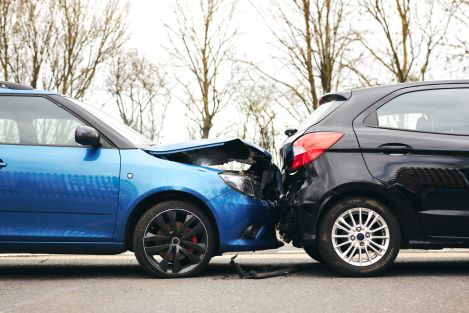
Written by Kayla Jane Barrie Updated on Feb 24, 2025 5 mins read

If you own a car, you know that it is vital to have an active policy before you hit the road. But what about additional protection like loss of use car insurance?
Accidents are unfortunate, and so are delays in vehicle repairs or claim settlements after the fact. You can’t afford to be without your vehicle for a short time. Loss of use coverage is specifically crafted to provide a transportation solution during this uncertain period.
This article will clarify what this coverage entails, helping you make an informed choice on whether it's a valuable addition to your Ontario auto insurance (you read that right – it’s surprisingly not mandatory!).
Loss of use coverage, or temporary vehicle replacement, is an optional add-on to your auto insurance policy. This policy endorsement is handy when your vehicle requires replacement or repair due to damage.
According to FSCO’s definition, loss of use coverage is described as providing a "substitute vehicle or reimbursement for your transportation expenses while your own vehicle is undergoing repairs or replacement due to damage caused by a covered peril."
If your vehicle is damaged, the loss of use policy covers your transportation costs while you wait (up to your policy limits). You can rent a car, take public transit, or call a cab or Uber.
In Canada, depending on your location, there are three common types of loss of use forms:
Have you ever been in a situation where your car was severely damaged in an accident and required extensive repairs or even a complete replacement? If yes, you might have wondered whether your policy includes coverage for a rental car during the waiting period. The key factor determining this is whether you have a loss of use coverage.
Here is an example of when OPCF 20, coverage for transportation replacement, could support you:
Loss of use coverage paid for a rental car while your car was being repaired, so you didn't have to arrange or pay for it yourself.
You get into a collision. Suppose your car needs repairs. It will be in the shop for about 1-2 weeks after the accident. However, you still have to go to work, run errands, and drop your kids off at school. You need a car to get around.
If you have OPCF 20 insurance coverage, you will be covered for the cost of a rental vehicle, while you wait for your car to be fixed.
However, if you do not have loss of use coverage, you will need to pay for transportation costs out of your pocket while your vehicle is undergoing repairs. The cost of a rental car, public transportation, taxis, and Uber can add up.
Insurance for vehicles in Ontario is mandatory and includes coverages like third-party liability, and SABS. However, loss of use coverage is an optional add-on that you can choose to include in your policy, but it is not a requirement by law.
Loss of use coverage is priced at approximately $60 to $80 annually, although this figure can fluctuate based on various factors, such as bundling home and auto and available insurance discounts.
For the most precise estimate tailored to your individual circumstances, it's recommended to consult with your ThinkInsure broker. They can provide you with an accurate cost assessment that aligns with your specific needs.
Loss of use coverage is an additional feature that becomes applicable when you have one or more of the following types of insurance:
You don't need all of the types above to be eligible for a loss of use policy. But, your coverage types limit your loss of use claim. For instance, with only collision coverage, you can't claim a rental car if your car is stolen - that's covered under comprehensive, specified perils, or all perils coverage.
Typically, your provider will discontinue loss of use coverage after the occurrence of one of three events:
The specific coverage limit varies based on your policy, and each insurer may offer different limits according to your agreement. For instance, your plan might include a maximum of $500 in coverage.
To understand how loss of use coverage applies to your situation, it's advisable to review your policy documents or have a discussion with your insurance broker.
Loss of use coverage comes with certain limitations that are important to understand. Here is a general look at limitations:
If you have additional coverage options, such as comprehensive insurance, you should have loss of use coverage included in your policy. Always check with your insurer to be sure.
Loss of use coverage is an add-on for your policy. If you want to protect yourself from any transportation costs associated with an accident, you can add it to your policy.
Your insurance policy may cover the cost of a rental car if your vehicle is damaged. However, if a rental car is not an option, your insurer may reimburse you for the reasonable cost of taxis or public transportation. This coverage differs from the "damage to non-owned vehicles" coverage, which does not cover rental cars.
Loss of use coverage is a valuable addition to your auto insurance that can provide significant benefits. If you need help deciding whether to include it in your policy, discussing your specific needs and circumstances with your broker is the best place to start.
| Categories | Auto |
|---|---|
| Tags | Auto Coverage |
Read our insurance blog to get helpful tips, information and news.
Has your car been totalled in an accident? Is your car a write off? Learn about vehicle write offs for a total loss insurance claim.
Get the facts on Toronto's auto theft problem. We break down the data, reveal the most-stolen vehicles (including the Honda CR-V and Lexus RX 350), and show which neighbourhoods are most affected.
Dive into the world of auto theft with our blog on the most stolen cars in Canada. See the most stolen cars across Canada, including provincial lists for Ontario and Quebec, and learn how high-risk models can affect your car insurance premiums.
Drive safe this winter! Check out these tips for driving in snowy and icy conditions in Ontario. Get other helpful info and FAQs on winter driving.